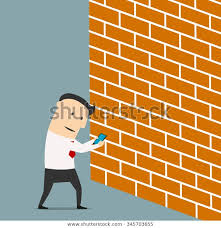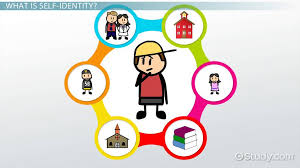User:Spavitra
Contents
The Internet as a Wall
The world wide web is a vast universe of information, more information than any one of us can consume in a lifetime. Because of the sheer amount of information that merely exists on the internet, it is easy to assume that we leave a minimal trace when we make posts, highlight articles, and comment on videos. However, every small action we make online can be traced back to us. When you set your social media accounts to private or choose not to put out information that could later be traced to you, you essentially put up a wall between you and the outside world. You prevent other users from finding out things about you that you do not want them to know. As someone who has gotten many lectures about online privacy from their very cautious father, I have always set my accounts to private and been careful about what kind of personal information I enter on websites. My findings about myself online are representative of this.
My Stone Wall Online
When analyzing the information I found about myself online, I see it as a sort of stone wall. It is really hard to see past the wall, but if you take out some of the right bricks, you can get a peek at what lies behind the wall.
The Stones
When Googling just my full name, it was difficult to find almost any information about me. There seem to be thousands of other “Pavitra Srinivasan’s” that exist online who unknowingly helped me hide my online presence. All these other people with the same name as me kind of act as stones in the wall I’ve built with my identity online. With me behind the wall, they block those in front of the wall from seeing my personal information. However, I have taken an effort to put up some stones myself. My Facebook privacy settings are set to not allow search engines outside of Facebook to link to my account, and the other social media accounts that I do have, while also private, do not have much activity on them. These are extra steps I have taken to ensure my privacy, and clearly the stones have held strong.
Taking out a Stone
If you know the right stone to take out of my wall, then you can get access to some information about me. For example, let’s say that someone knows I go to the University of Michigan. When searching up my name along with the words “University of Michigan,” a flurry of relevant information about me pops up: my LinkedIn, Facebook posts from my previous job through the university, a website leading to my current job, and an interview from a company I worked for last summer. So yes, someone was able to take out the right stones and get some information about me, but these are all tidbits about myself that I have made sure were associated with my identity at the University of Michigan.
Purpose
There is a reason I have put forth effort toward creating an online wall. As Luciano Floridi says, your online identity is “comparable to seeing oneself as seen by others.” The wall I have put up online is a conscious effort on my part to be seen a certain way. When I am searching for a job, I do not want companies to see my doubts about myself or what I do on a weekend, I want them to see my achievements.
Breaking Down the Wall?
Just as I was getting confident in the online wall that I built, I got access to a Databroker Report about myself. Although much of the information in this report was information about my other namesakes, there were some things scrounged about myself that I did not know I had online. The report knew who my parents were and they knew who my neighbors were. I was wondering where this data about me came from, but after a little digging I realized it all came from my voter records, which is public information. The report found my parents because we have the same permanent address, and they also found my neighbors through the same address. For the time being, it seems as though the wall I built for myself is sturdy.
My Stone Wall Offline
I feel as though my online presence encapsulates how I present myself in real life. I am not someone who shares my life story and my thoughts with just anyone. To get those things out of me, you really have to get to know me, which is essentially a process of removing brick by brick until you see the real me. The difference between my online wall and my offline wall is that some people have made it behind my offline wall, which is a choice I willingly made.
I am Not My Wall
Although I have related the wall I have created online with how I present myself in real life, the information about myself online does not actually showcase who I am as a person. Online, you cannot see my hobbies, my social life, or my insecurities. You can only see what I want you to see. Dean Cocking goes more into this with his discussion of active and passive selves. When it comes to my online identity, my active self is the one who is ambitious and intelligent. When my friends see me on LinkedIn, they are not going to post about my passive self, the person I am when I hang out with them. They see how I am trying to represent myself, so they will put aside the aspects of my passive self in this moment. This might not truly represent me as a whole, but it is the part of myself that I want to be showcased. As time goes on and I move forward in my career, I will continue to keep my online wall strong. Though peeks behind this wall might not truly represent me as a whole, it is the part of myself that I want to be showcased.


